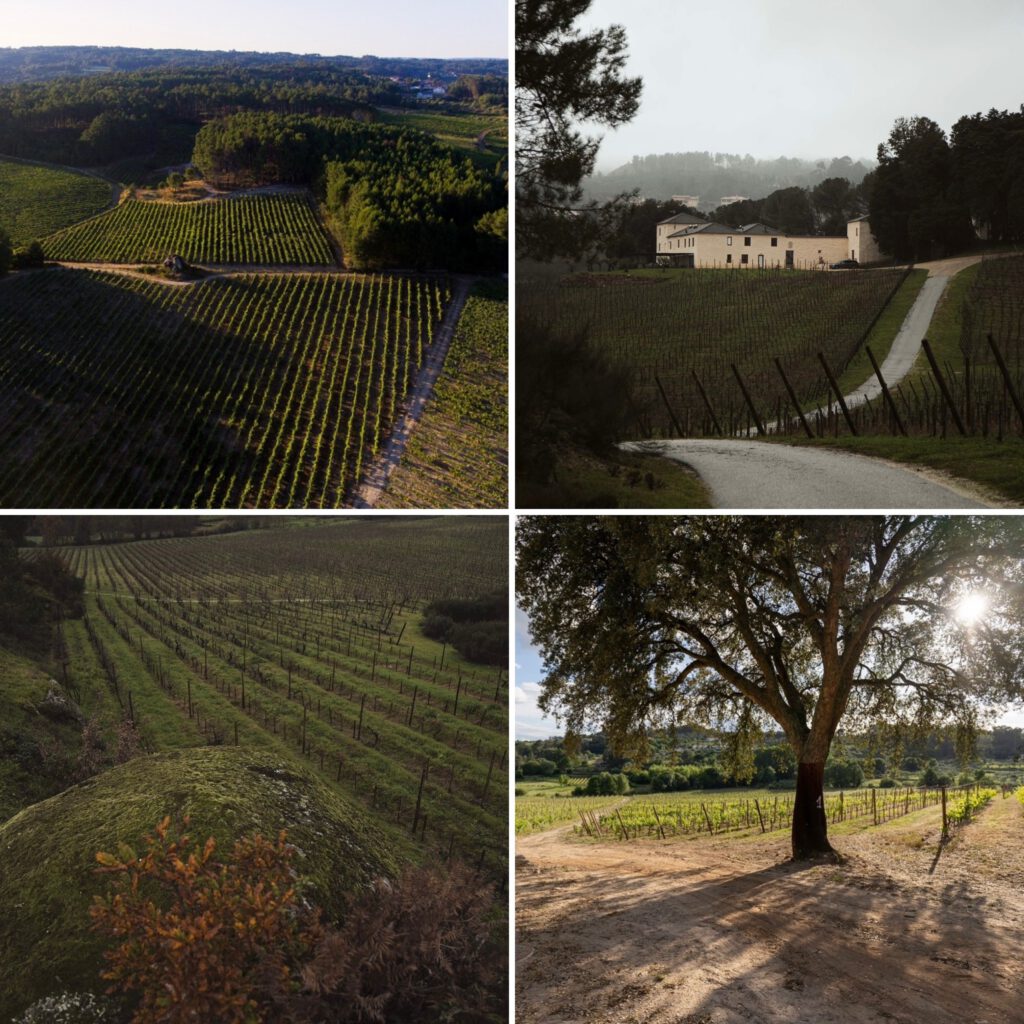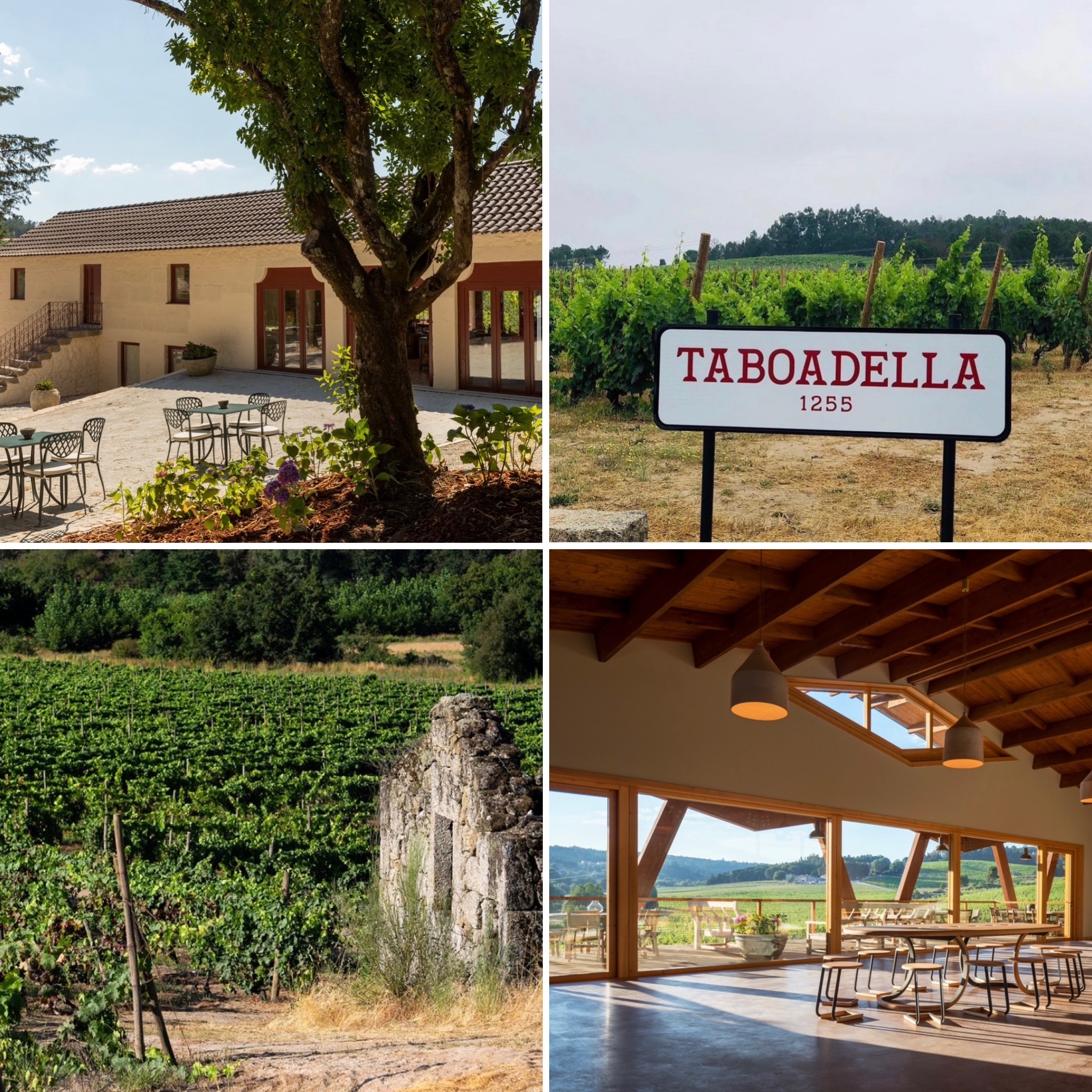Taboadella: Amorim’s Star in Portugal’s Dão Wine Region.
The Amorim Group, recognized as the world’s largest cork company, boasts a centuries-old passion for cork, coupled with an equally deep love of wine. In 1999, the family ventured into the port wine business in Douro by acquiring Quinta Nova. Subsequently, in 2018, they furthered their journey into another classic winemaking region, the Dão, with the acquisition of Quinta da Taboadella. With a deep cultural understanding of the industry, the Amorim Family, led by Luisa Amorim, the fourth generation of the family, is dedicated to classic styles of wines in both regions. This article aims to introduce their latest project, Taboadella, based on an interview with Rodrigo Costa, an enologist in the estate. The interview delves into their history, philosophy, winemaking, and wine tourism in the project. Additionally, we provide an in-depth review of their iconic wines.
Dão: Crafting Elegance in Portugal’s First Demarcated Region for Still Wines
In the Iberian Peninsula, Dão is situated in farther south than Vinho Verde and Douro, and inland from Bairrada. The backland, surrounded by five mountains and several rivers, boasts a uniquely blessed terrain. The gentle slopes create an ideal topography for grape ripening. The cool nights at higher elevations play a crucial role in preserving a refreshing high acidity in the grape, achieving a perfect balance. Additionally, the protection from humid Atlantic climatic influence contributes to extra ripeness and lower disease pressure.
Despite being in close proximity to the prominent Porto region, Douro, and utilizing the same grape varieties in winemaking, Dão grapes don’t reach the same ripeness as those in Douro. Dão wines are purer, fresher, lighter, and exhibit a more elegant style. It’s no wonder that Dão became Portugal’s first demarcated region for still wines in 1908, given its potential to produce high-quality wines.

Taboadella’s Vinicultural Symphony: Balancing Tradition and Innovation Across Sprawling Vineyards
The Amorim family cultivates grapes for Taboadella on a sprawling 42 hectares, a significantly larger expanse than the average vineyard holdings in the Dão region, where 90% of vineyards are less than 0.5 hectares. Given their leading role in the region, historically and in scale, the Amorim Family adheres to a philosophy that prioritizes preserving natural biodiversity and honoring traditional winemaking practices.
The grape cultivation for Taboadella follows biological and biodynamic processes, minimizing soil disturbance to maintain ecological diversity. Eschewing synthetic products and machine cultivation, the estate opts for organic fertilizers and minerals, creating an ideal vineyard microclimate and conditions. The grapes are harvested by hand with meticulous manual sorting to ensure only the highest quality.
The estate takes pride in using traditional indigenous varieties, such as Touriga Nacional, Alfrocheiro, Tinta Roris, Baga, and Tinta Pinheira in reds, as well as Encruzado, Bical, and Cereal-Branco in whites. These are native to Portugal, with some varieties (e.g. Encruzado), being unique to the Dão region.
Have you noticed that there has been an upward trend for indigenous varieties among wine enthusiasts seeking something new? In this era of globalization, information or winemaking practices can travel from one region to another, making sure prominent varieties or techniques are likely to be adopted elsewhere. The appeal of a unique style using indigenous varieties lies in its ability to express the terroir, which is particularly attractive authentically. This is one of the notable positive aspects of Portugal’s winemaking.
Let’s come back to the estate’s story. Taboadella has been dedicated to not only preserving tradition but also embracing modern winemaking techniques and striving for high quality. For example, they conduct multiple sorting processes to ensure only perfect bunches are used and to eliminate all insects and dried or deformed grapes. The state-of-the-art destemmer/crusher allows them to separate berries by size and remove unnecessary elements, including seeds. Furthermore, a “tailor-made” gravity flow is employed for a gentle winemaking process. Depending on the desired style, various types of vats, such as cement and differently sized stainless-steel vats, are utilized for fermentation to express the terroir of Taboadella purely.

A Tasting Journey through Taboadella’s Portfolio
We had a chance to taste three wines that showcase Taboadella’s philosophy and winemaking, starting with the Villae Branco 2022 and continuing with two of the estate’s Reserva’s.
Villae Branco 2022 | 30% Encruzado 40% Bical and 30% Cerceal
This is the façade of the Taboadella from which you can discover its style and quality. The combination of Encruzado, with its exuberance and transparency, along with the delicate floral notes of Bical and the austerity of Cerceal, creates a unique flavor profile with vibrant acidity.
The wine is characterized by its cleanliness, purity, and freshness, showcasing subtle notes of melon, white peach, lemon zest, grapefruit, a touch of elderflower, and hints of hazelnuts. The integrated, gentle mouthfeel is complemented by fresh acidity, leading to a satisfying finish.
We award the Villae 2022 with a 90-point DWA score.
Encruzado Reserva 2022 | 100% Encruzado
Encruzado is a rare variety predominantly cultivated in the Dão region. It holds immense potential but poses challenges in crafting high-quality wine due to its susceptibility to oxidation and the risk of losing its delicate aromas. Successful cultivation and meticulous craftsmanship are imperative; when executed correctly, the rewards can be tremendous. Additionally, it shows a favorable affinity for barrel fermentation and lees aging, imparting a well-structured character akin to a Burgundian white. When expertly crafted and aged, these full-bodied wines can also develop enticing hazelnut and pine resin aromas.
A sophisticated and refined wine exhibiting pronounced minerality, characterized by notes of white peach, lemon zest, grapefruit, lemon, melon, honeysuckle, wet stone, a touch of hazelnuts, and vanilla. This wine boast a structured and textured profile, with refreshing zesty acidity and mid-palate weight that seamlessly integrates into a harmonious mouthfeel. The experience is rounded off with a long and persistent finish.
Click here for a review of the 2021 Encruzado Reserva.
We award the 2022 Encruzado Reserva with a 94-point DWA score.
Alfrocheiro Reserva 2020 | 100% Alfrocheiro
Alfrocheiro is another rare variety that originated in Dão and has used in various regions across Portugal. The compact bunches of small berries display a rich color, showcasing a well-balanced interplay between body and freshness with fine-grained tannins. 20% percent of the wines undergo aging in new French oak barrels, while the remaining 80% mature in second-year barrels for nine months.
Succulent, earthy, and harmoniously balanced wine that unfold flavors of black and red plums, blackberries, red strawberries, nutmeg, cloves, vanilla, earth, fresh oregano, forest floor, and a subtle hint of leather. Emerging as dry, they are structured by vibrant high acidity and firm yet ripe tannins. Notably, it exhibits pronounced flavor intensity and impressive concentration on the mid-palate, leading to a long and enduring finish. Long-aging potential.
We award the Alfrocheiro Reserva 2020 with a 93-point DWA score.

Dão Delights: Exploring Portugal’s Wine Tourism Gem
We can’t overlook the remarkable wine tourism culture in Portugal. Aside from its outstanding wines, Portugal is an ideal destination for wine tourism due to its delectable cuisine, and rich cultural and historical heritage. Dão stands out as highly recommended region for several reasons. Its smaller land area encompasses seven sub-regions, providing an opportunity to appreciate the differences in terroir in close proximity. The picturesque mountainous scenery offers a perfect setting for relaxation, and the region’s cultural richness extends to various activities such as mushroom picking, basket weaving, cheese and sweets production, and ceramics, ensuring a stimulating stay.
With the Amorim Group’s commitment to being a leading business in Portugal, the estate is crafted to make your stay exceptional. Designed by a leading Portuguese architect and constructed with sustainable materials, including cork, the estate promises a truly unique experience.
Taboadella: A Culmination of Excellence, Tradition, and Innovation in Portuguese Winemaking
We’re genuinely impressed by the Amorim Family’s dedication to the Taboadella project, where they seamlessly blend tradition with innovation, prioritize quality, and emphasize regional development. While Portuguese wines from indigenous varieties or specific wine regions’ names might not be widely known yet, their competitive quality and unique value are noteworthy. This position is gaining prominence within Europe, even when compared to larger wine-producing countries.
Including these high-quality wines on your bucket list and delving into the joy of wine tourism will undoubtedly offer consumers extraordinary experiences and open up a new world of discovery.
This article is written by our own Kazumi Uejo. We would like to thank Taboadella winemaker Rodrigo Costa for his insights and time, and Vinites for providing the wines. Taboadella is imported in the Netherlands by Vinites, and available through selected partners. Picture credits: Taboadella and Dutch Wine Apprentice.

